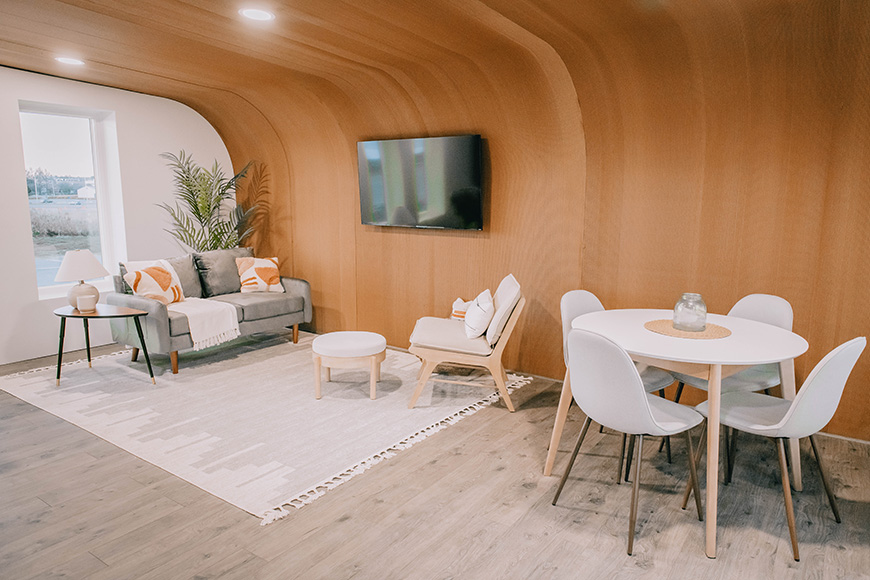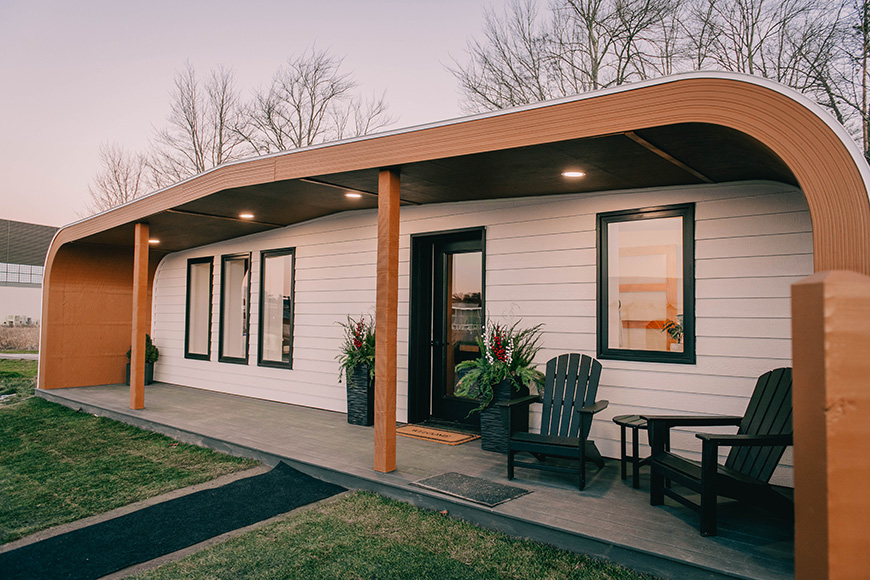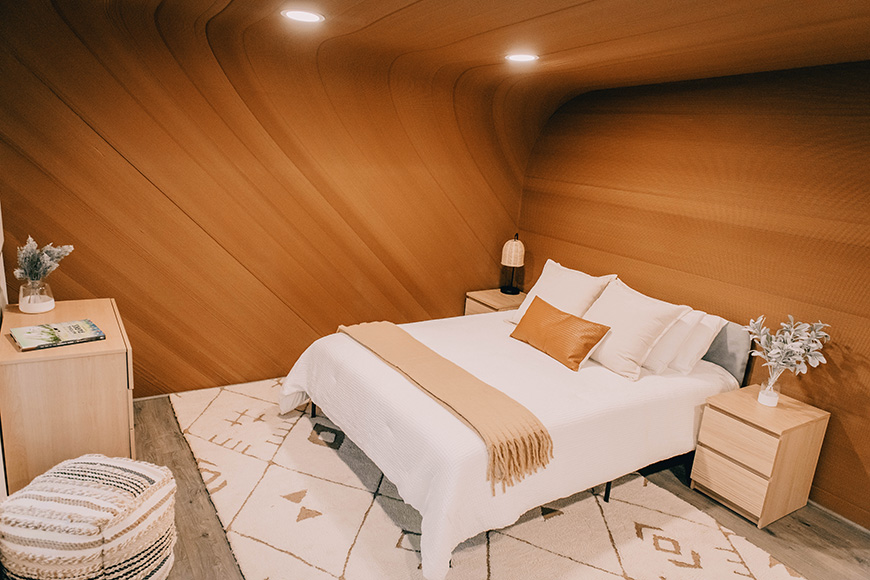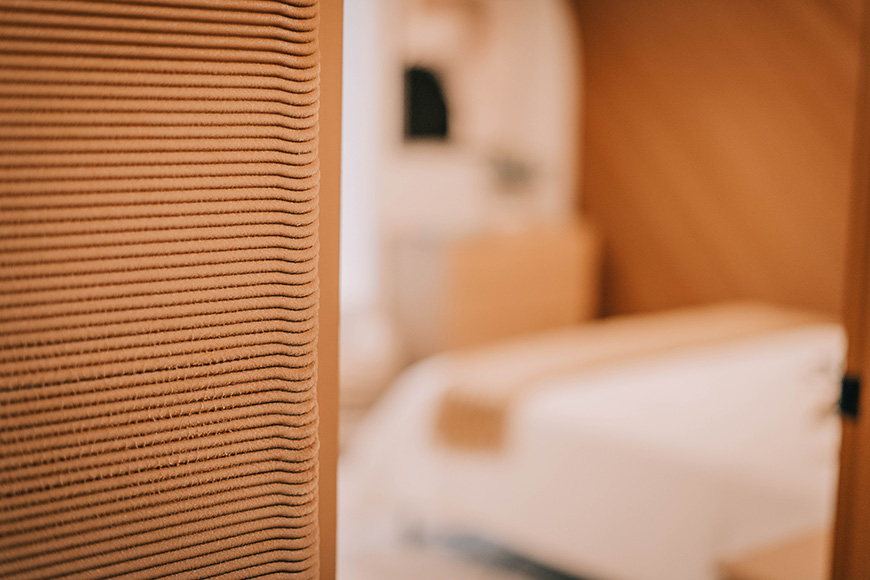UMaine unveils the first 3D-printed house entirely made of bio-based materials
Above: an interior view of BioHome3D, the first 3D-printed home made entirely from recyclable biomaterials.
The University of Maine unveils the first 3D-printed house entirely made of bio-based materials
Inaugurated on November 21, 2022, BioHome3D is the world’s first 3D-printed building entirely made of bio-based materials.
Developed by the University of Maine’s Advanced Structures and Composites Center as part of the U.S. Department of Energy’s Hub and Spoke program, the 600-sqm prototype house comprises floors, walls, and roof 3D-printed using a mixture of wood fibers and bio-resins.
the building, which is fully recyclable and produces very little construction waste, has very good thermal and acoustic performances thanks to a thick insulation layer, also made from wood fibers.
Along with being a technological demonstrator, BioHome3D is also aimed to explore possible solutions to the shortage of affordable housing that the U.S., and Maine in particular, are experiencing.
Together with his students, Professor Habib Dagher has therefore decided to design and build a cost-effective and energy-efficient house that could be made from locally sourced recycled forest products with a limited amount of workforce.
An exterior view of the house; the curvilinear shape of the roof makes it easier to print walls and the roof in a single passage.
In this image of the bedroom, we can see the seamless connection between walls and ceiling.
The small house consists of four main modules, which were printed in a factory nearby and then assembled on-site in about half a day. The building was subsequently fitted with technical systems and equipped with sensors that monitor its thermal and structural performances during Maine’s cold winter
“Many technologies are being developed to 3D print homes, but unlike BioHome3D, most are
printed using concrete. However, only the concrete walls are printed on top of a conventionally
cast concrete foundation. Traditional wood framing or wood trusses are used to complete the
roof. Unlike the existing technologies, the entire BioHome3D was printed, including the floors, walls, and roof. The biomaterials used are 100% recyclable, so our great-grandchildren can fully recycle BioHome3D.” Dagher says.
BioHome3D was developed as part of the U.S. Department of Energy’s Hub and Spoke
program between the UMaine and Oak Ridge National Laboratory.
A close-up photo that illustrates the additive printing technology used to make the house; the material used to print the buildings consists of wood fibers and bio-resins.
The house’s kitchen; the 600-square-foot home contains a living room/dining room, a cooking area, a double bedroom, and a bathroom
All images are courtesy of the University of Maine.
copyright Inexhibit 2025 - ISSN: 2283-5474






